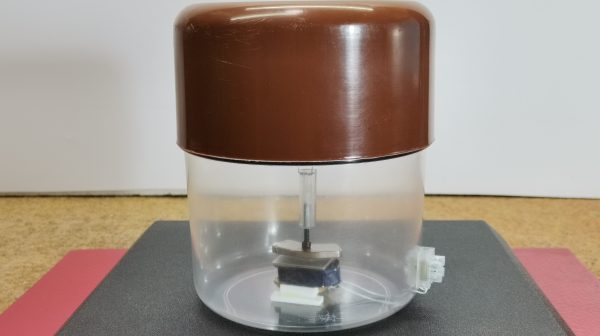A friend of ours once described computers as “high-speed idiots.” It was true in the 80s, and it appears that even with the recent explosion in AI, all computers have managed to do is become faster. Proof of that can be found in a story about using ASCII art to trick a chatbot into giving away the store. As anyone who has played with ChatGPT or its moral equivalent for more than five minutes has learned, there are certain boundary conditions that the LLM’s creators lawyers have put in place to prevent discussion surrounding sensitive topics. Ask a chatbot to deliver specific instructions on building a nuclear bomb, for instance, and you’ll be rebuffed. Same with asking for help counterfeiting currency, and wisely so. But, by minimally obfuscating your question by rendering the word “COUNTERFEIT” in ASCII art and asking the chatbot to first decode the word, you can slip the verboten word into a how-to question and get pretty explicit instructions. Yes, you have to give painfully detailed instructions on parsing the ASCII art characters, but that’s a small price to pay for forbidden knowledge that you could easily find out yourself by other means.
seismic11 Articles
DIY Geophone Build Performs Well
If you want to know what’s going on with the ground, geologically speaking, a geophone is a great tool to have. It lets you listen in on the rumbles and grumbles beneath your feet, and can give you great insight into matters of seismic importance. [mircemk] has designed a very capable geophone that’s simple enough for you to build at home.
The geophone relies on a mass suspended upon a spring inside a chamber, which as you might imagine, will move when shaken by seismic vibrations. The mass is in fact a plastic rod, fitted with an iron nut and a magnet on the end.
This is mounted above a coil, which is fixed to the base of the chamber. Thus, when the chamber is shaken by seismic activity, the mass moves relative to the coil, with the coil picking up the varying magnetic field as it dances around.
The YouTube video does a great job of explaining the concepts involved and how to practically build the device. [mircemk] has also had some other great projects featured on Hackaday before, too.
Scientists Call Out Apollo 17 After Investigating Moonquakes Past
In the vast realm of space exploration, new discoveries often emerge from old data. Thanks to advanced algorithms and keen observers, the seismic activities of our closest celestial neighbor, the Moon, have recently been thrust back into the limelight.
Thanks to the effort of the NASA crew involved in the Apollo 17 mission, it’s possible investigate these phenomena today with datasets from the past. Recently, researchers working with this data turned up some intriguing findings, and published them in a new paper. It reveals that one unexpected source of moonquakes could be the very equipment that Earth’s astronauts left behind. Continue reading “Scientists Call Out Apollo 17 After Investigating Moonquakes Past”
Hackaday Links: July 30, 2023
A couple of weeks ago, we noted with interest that the space shuttle Endeavour (OV85) would be set up as a full-stack launch configuration display, complete with external fuel tank and solid rocket boosters. We predicted that this would result in some interesting engineering, not least of which will be making the entire 20-story stack safe from seismic activity. Looks like we were right on all counts, with this story about the foundation upon which the display will stand, which has been under construction for quite a while now. The base has six seismic isolators that support the 2.4-m thick slab of reinforced concrete that will serve as a perch for the full stack. The 1,800-ton slab will be able to move a meter or so from its resting position during earthquakes. Or perhaps more accurately, the foundation will allow Los Angeles to move as much as it wants while Endeavour rides it out.
If like us you’re worried that seismic loads are vastly different than the loads the spacecraft was actually designed for, relax — it turns out that the flight loads are far in excess of predicted loads from seismic stress. The plan is to build the booster stacks first — the aft skirts, which will support the entire stack, were just bolted in place — then lift the external tank in place between the boosters, and finally hoist the actual orbiter into place. After the stack is complete, the rest of the building will be built around it. We’re really looking forward to seeing some video on this project.
Hackaday Links: December 25, 2022
Looks like it’s lights out on Mars for the InSight lander. The solar-powered lander’s last selfie, sent back in April, showed a thick layer of dust covering everything, including the large circular solar panels needed to power the craft. At the time, NASA warned that InSight would probably give up the ghost sometime before the end of the year, and it looks like InSight is sticking to that schedule. InSight sent back what might be its last picture recently, showing the SEIS seismic package deployed on the regolith alongside the failed HP3 “mole” experiment, which failed to burrow into the soil as planned. But one bad experiment does not a failed mission make — it was wildly successful at most everything it was sent there to do, including documenting the largest marsquake ever recorded. As it usually does, NASA has anthropomorphized InSight with bittersweet sentiments like “Don’t cry, I had a good life,” and we’re not quite sure how we feel about that. On the one hand, it kind of trivializes the engineering and scientific accomplishments of the mission, but then again, it seems to engage the public, so in the final rinse, it’s probably mostly harmless.
USB Mouse Hack For Pachyderm Protection
When most of us think of seismometers, our minds conjure up images of broken buildings, buckled roads, and search and rescue teams digging through rubble. But when [Subir Bhaduri] his team were challenged with solving real world problems as frugally as possible as part of the 2020 Frugal Science course, he thought of farmers in rural India for whom losing crops due to raiding elephants is a reality. Such raids can and have caused loss of life for humans and elephants alike. How could he apply scientific means to prevent such conflicts, and do it on the cheap?
Whether inspiration came from using a computer mouse with the cursor speed turned up to “orbital velocity” is debatable, but [Subir] set forth to find out if such sensitivity could be leveraged for the seismic detection of the aforementioned elephants. His proof of concept is a fantastically frugal low cost seismograph using an optical mouse and some cheap PVC pipe and fittings.
We invite you to watch the video below the break to find out how it works. You’ll be impressed as we were by [Subir]’s practical application of engineering principles. And keep your eyes open for the beautiful magnetic damper hack. It’s a real treat!
If pontificating pesky pachyderms p-waves piques your interest, perhaps you’ll appreciate previous projects which produce data with piezo pickups and plumbing parts.
Hackaday Links: August 2, 2020
If you somehow manage to mentally separate yourself from the human tragedy of the COVID-19 pandemic, it really has provided a fascinating glimpse into how our planet operates, and how much impact seven billion people have on it. Latest among these revelations is that the shutdowns had a salubrious effect in at least one unexpected area: solar power. Researchers found that after the Indian government instituted mandatory lockdowns in March, output from solar power installations in Delhi increased by more than eight percent. The cause: the much-diminished smog, which let more sunlight reach solar panels. We’ve seen similar shutdown-related Earth-impact stories, from decreased anthropogenic seismicity to actually being able to see Los Angeles, and find them all delightfully revealing.
Remember Google Glass? It’s hard to forget, what with all the hype leading up to launch and the bitter disappointment of realizing that actually wearing the device wouldn’t go over well in, say, a locker room. That said, the idea of smart glasses had promise, and several startups tried to make a go of combining functionality with less out-there styling that wouldn’t instantly be seen as probable cause for being a creep. One such outfit was North, who made the more-or-less regular looking (if a bit hipsterish) Focals smart glasses. But alas, North was bought out by Google back in June, and as with so many things Google acquires, Focals smart glasses are being turned off. Anyone who bought the $600 specs will reportedly get their money back, but the features of the smart glasses will no longer function. Except, you know, you’ll still be able to look through them.
It looks like someone has finally come up with a pretty good use case for the adorably terrifying robot mini-dogs from Boston Dynamics. Ford Motors has put two of the yellow robots to work in their sprawling Van Dyke Transmission Plant in Michigan. Dubbed Fluffy and Spot (aww), the dogs wander around the plant with a suite of cameras and sensors, digitally mapping the space to prepare for possible future modifications and expansions. The robots can cover a lot of ground during the two hours that their batteries last, and are even said to be able to hitch a ride on the backs of other robots when they’re tuckered out. Scanning projects like these can keep highly trained — and expensive — engineers busy for weeks, so the investment in robots makes sense. And we’re sure there’s totally no way that Ford is using the disarmingly cute robo-pets to keep track of its employees.
We all know that the Linux kernel has some interesting cruft in it, but did you know that it can actually alert you to the fact that your printer is aflame? We didn’t either until Editor-in-Chief Mike Szczys shared this reddit post that details the kernel function lp_check_status and how it assumes the worst if it detects the printer is online but also in “check mode.” The Wikipedia entry on the “lp0 on fire” error message has some interesting history that details how it’s not as implausible as it might seem for a printer, especially one in the early 1970s, to burst into flames under the right conditions. A toner fuser bar running amok on a modern laser printer is one thing, but imagine a printer with a fusing oven running out of control.
And finally, because 2020 is apparently the gift that can’t stop giving, at least in the weirdness department, the US Department of Defense let it slip that the office charged with investigating unidentified aerial phenomena is not quite as disbanded as they once said it was. Reported to have been defunded in 2017, the Advanced Aerospace Threat Identification Program actually appears to live on, as the Unidentified Aerial Phenomena Task Force, operating out of the Office of Naval Intelligence. Their purpose is ostensibly to study things like the Navy videos of high-speed craft out-maneuvering fighter jets, but there are whispers from former members of the task force that “objects of undetermined origin have crashed on earth with materials retrieved for study.” All this could just be a strategic misdirection, of course, but given everything else that has happened this year, we’re prepared to believe just about anything.















